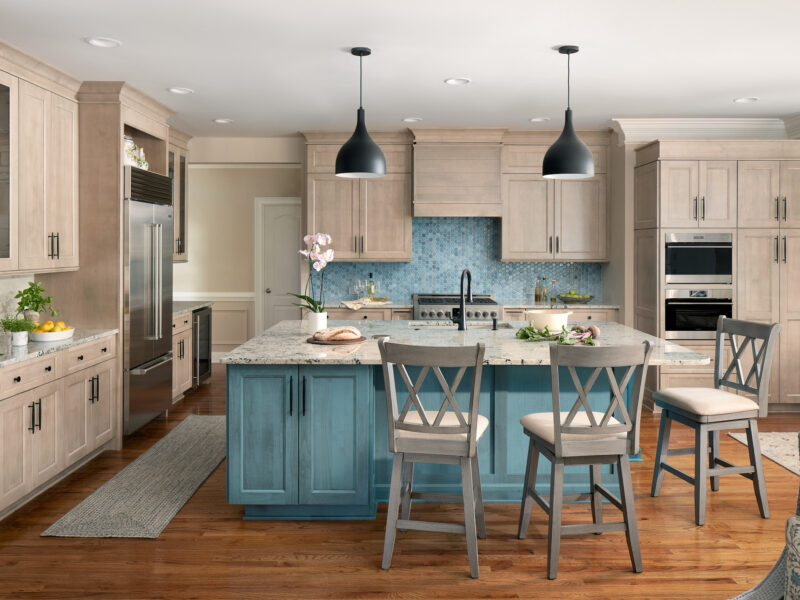The kitchen is the heart of the home – and they’ve recently undergone an evolution. The focal point of this transformation is none other than: the kitchen island. The kitchen island is no longer just a piece of furniture; it’s a multi-functional hub that caters to the diverse needs of contemporary living.
In response to shifting lifestyles, most people in today’s day and age now prefer an eat-in kitchen area over a formal dining room. This paradigm shift signifies the kitchen’s role as a social hub. Beyond the traditional roles of cooking and prepping, the contemporary kitchen island has evolved beyond being just used for food, into a multifaceted entity – accommodating a range of activities from work and learning to entertaining. Large islands, identified by serve as dynamic spaces for cooking, serving, dining, and gathering.
Here are some things that many builders and homeowners are including in their kitchen islands today:
Smart Storage Solutions
Beyond a much larger size, contemporary kitchen islands are designed with intelligent storage solutions. Pull-out drawers, hidden compartments, and vertical storage options maximize space and minimize clutter, reflecting a commitment to both functionality and aesthetics.
Technology Hub
Kitchen islands are also becoming tech-savvy, incorporating built-in charging stations, tablet mounts, and smart home integration. This new wave of design ensures that the kitchen island is not just a culinary workspace but also a command center for digital devices – making it an ideal spot for recipe browsing, meal planning, and virtual gatherings.
Multi-Level Surfaces
Kitchen islands now can feature multi-level surfaces. This design accommodates various activities, allowing users to separate food preparation, casual dining, and work or study areas. The tiered approach enhances the island’s functionality, organization, cleanliness, and aesthetic appeal.
Greener Materials
Today’s emphasis on sustainability extends to the materials used in kitchen island construction. Designers are increasingly opting for recycled and upcycled materials like reclaimed wood, salvaged metal, and eco-friendly composites.
Indoor Herb Gardens
A growing trend involves integrating small herb gardens into kitchen islands. This not only adds a touch of greenery to the space but also promotes sustainability by encouraging homeowners to grow their herbs!
Statement Lighting Fixtures
To make the kitchen island brighter and easier to cook and gather under, designers are now incorporating statement lighting fixtures directly above the kitchen island. These fixtures also make the island appear as a focal point of the room, add a touch of personality to the space, and complement the overall design aesthetic.
Wellness Features
With integrated features like built-in juicers, smoothie stations, and even hydroponic systems for growing fresh produce, the kitchen island is becoming a center for promoting wellness. These contemporary additions highlight an approach to health and nutrition.
Customizable Workstations
Kitchen islands now offer customizable workstations, which accommodate the diverse needs of homeowners. Whether it’s a dedicated baking station with a marble countertop or a butcher block for chopping, these tailored spaces cater to specific culinary preferences and needs.
As we navigate the future of kitchen design, the evolution of the kitchen island stands out as a key indicator of changing lifestyles and priorities. From a simple cooking space to a dynamic, hub, the kitchen island has become the epitome of versatility in contemporary homes. Embracing sustainability, thoughtful lighting design, and wellness, 2024 kitchen trends signal a holistic approach to creating spaces that are not just aesthetically pleasing but also accommodate the ever-changing needs of the contemporary family.







